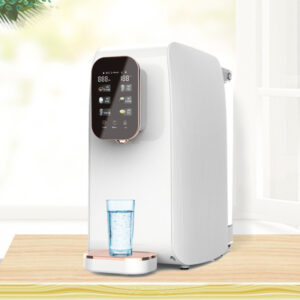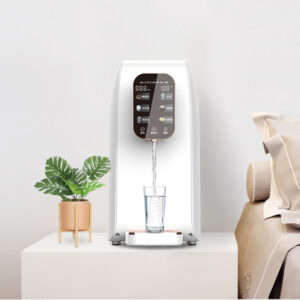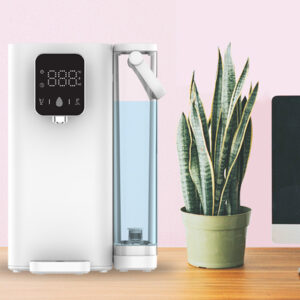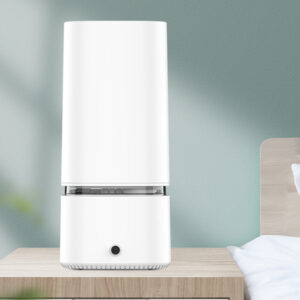China Portable Instant Hot Water Dispenser Market Analysis and Forecast
China Portable Instant Hot Water Dispenser Market Analysis and Forecast
The portable instant hot water dispenser market in China has emerged as a dynamic segment within the broader household appliance industry. These devices, designed for convenience and efficiency, provide immediate access to hot water without the need for traditional boiling methods. They are particularly popular in urban households, offices, and on-the-go scenarios due to China’s rapid urbanization, busy lifestyles, and growing emphasis on health and hygiene. This article analyzes the current state of the market, key drivers, challenges, trends, major players, and provides a forecast up to 2030.

Market Overview
Portable instant hot water dispensers are compact, energy-efficient appliances that heat water on demand using advanced technologies such as ceramic heating elements or instant heating coils. Unlike traditional water dispensers that rely on large bottles or tanks, portable models are lightweight, often battery-operated or plug-in, and suitable for travel, small kitchens, or personal use. In China, the market is influenced by cultural preferences for hot beverages like tea and instant noodles, as well as concerns over water quality in many regions.
The segment falls under the larger water dispenser category, which includes hot, cold, and combination units. However, portable instant hot variants have gained traction due to their mobility and quick-heating capabilities, often achieving boiling temperatures in seconds. The market is segmented by product type (countertop, handheld, wall-mounted), technology (instant heating vs. tank-based), application (residential, commercial, portable/travel), and distribution channels (online, retail stores, supermarkets).
Market Size and Growth
As of 2023, the overall China water dispenser market was valued at approximately USD 221.3 million, with portable instant hot water dispensers accounting for a growing share, estimated at around 15-20% based on rising demand for compact solutions. The portable segment has benefited from innovations in miniaturization and energy efficiency, driving its expansion.
The market has exhibited robust growth, with a compound annual growth rate (CAGR) of about 10-12% over the past five years. This is attributed to increasing disposable incomes, urbanization rates exceeding 60%, and a shift toward smart home appliances. In 2024, the portable instant hot water dispenser sub-market is projected to reach USD 40-50 million, reflecting heightened adoption in tier-1 and tier-2 cities like Beijing, Shanghai, and Guangzhou.
Key Trends
Several trends are shaping the China portable instant hot water dispenser market:
- Smart Integration: Devices with IoT connectivity, app controls, and voice activation are becoming standard. Features like temperature presets (e.g., 45°C for baby formula, 95°C for tea) and water quality monitoring appeal to tech-savvy consumers.
- Energy Efficiency and Sustainability: With China’s push toward carbon neutrality by 2060, manufacturers are focusing on low-energy models using eco-friendly materials. Solar-assisted or low-wattage dispensers are emerging for portable use.
- Health and Hygiene Focus: Post-COVID-19, touchless operation, UV sterilization, and multi-stage filtration have become key selling points to address water contamination concerns.
- Portability for Travel and Outdoor Use: Compact, battery-powered models are popular among young professionals and travelers, aligning with the rise of domestic tourism and remote work.
- E-commerce Dominance: Online platforms like Tmall and JD.com account for over 50% of sales, driven by competitive pricing and consumer reviews.
Market Drivers
The growth of the portable instant hot water dispenser market in China is propelled by several factors:
– Urbanization and Lifestyle Changes: With over 900 million urban residents, space constraints in apartments favor compact appliances. Busy schedules demand instant solutions for daily needs.
– Rising Health Awareness: Concerns about tap water quality, including heavy metals and pollutants, drive demand for dispensers with built-in purification.
– Government Initiatives: Policies promoting energy-efficient appliances and water conservation, such as subsidies for green products, support market expansion.
– Technological Advancements: Innovations like rapid heating (3-5 seconds) and customizable settings reduce energy waste and enhance user experience.
– Economic Growth: Increasing per capita income, projected to exceed USD 15,000 by 2025, enables more households to afford premium appliances.
Challenges
Despite strong growth prospects, the market faces hurdles:
– High Initial Costs: Premium portable models can cost USD 50-150, limiting penetration in lower-income rural areas.
– Infrastructure Limitations: Inconsistent electricity supply in some regions and water hardness issues can affect device performance.
– Intense Competition: The market is fragmented with numerous local and international brands, leading to price wars and quality variations.
– Regulatory Compliance: Strict standards on energy efficiency and safety require ongoing R&D investments.
– Counterfeit Products: Fake or substandard dispensers on online platforms undermine consumer trust.
Key Players
The China portable instant hot water dispenser market is dominated by domestic giants, with some international influence. Major players include:
– Midea Group: A leader in home appliances, offering affordable portable models with instant heating and smart features.
– Haier Group: Known for innovative designs, including compact dispensers integrated with IoT ecosystems.
– Xiaomi (MIJIA): Pioneering portable units like the MIJIA Instant Hot Water Dispenser, emphasizing affordability and rapid heating.
– Angel Group: Specializes in water purification, with portable dispensers featuring advanced filtration.
– AUX and CHANGHONG: Focus on mid-range products for residential and commercial use.
Other notable companies include Qin Yuan, Lamo, Royalstar, YANGZI, and Meiling, which collectively hold significant market share through extensive distribution networks.
Market Forecast
Looking ahead to 2030, the China portable instant hot water dispenser market is forecasted to grow at a CAGR of 11-13%, reaching USD 100-120 million. This projection assumes continued urbanization, technological advancements, and supportive policies.
– Short-Term (2025-2027): Growth will be driven by post-pandemic recovery, with emphasis on health features. Market value could hit USD 60-70 million by 2027.
– Medium-Term (2028-2030): Integration with smart homes and expansion into rural markets via e-commerce will accelerate adoption.
Regional variations will persist, with eastern coastal provinces leading, while western regions catch up through infrastructure improvements. Global trends, such as sustainability, will influence product development, potentially increasing exports from China.

Conclusion
The portable instant hot water dispenser market in China represents a blend of innovation, convenience, and necessity in a rapidly evolving consumer landscape. With strong drivers like urbanization and health awareness outweighing challenges, the sector is poised for sustained growth. Manufacturers should prioritize R&D in smart, eco-friendly technologies to capture emerging opportunities. As China advances toward a high-tech, sustainable future, this market will play a key role in enhancing daily life for millions.
For more about china portable instant hot water dispenser market analysis and forecast, you can pay a visit to Olansi at https://www.olansgz.com/product-category/water-dispenser/ for more info.

















